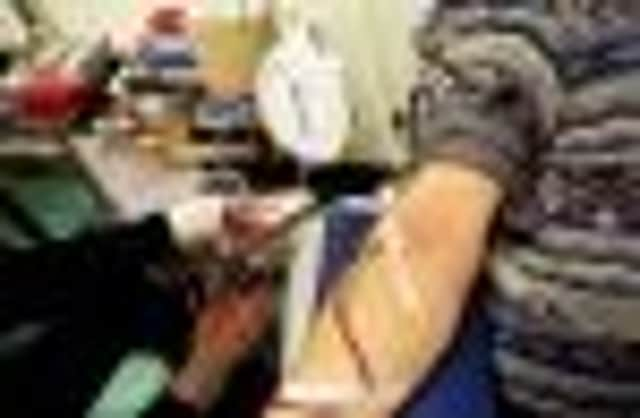Scotland’s hospitals have only three days of emergency blood


The Scottish National Blood Transfusion Service (SNBTS) said its supply of the O-negative type is below half the “ideal” six-day stock it aims to have at all times.
The blood type can be given to anyone in an emergency and is the only safe option when a patient’s blood group is not immediately available.
Advertisement
Hide AdAdvertisement
Hide AdIt can be given during specialised procedures and for use with unborn and premature babies.
The service has now issued a plea urging donors of all groups – particularly groups O, A and B – to give blood ahead of the October school holidays, when supplies typically fall as many donors go on holiday.
SNBTS spokeswoman Dr Moira Carter said: “Although we are currently able to meet hospital demand, we need to give our stocks a significant boost before we enter the holiday period.
“This year, we are particularly concerned as we expect that more families will head off for some much-needed sunshine given the poor summer.
“When that happens, we find that donor numbers fall by up to 20 per cent.
“Specifically, we are asking for all group O, A and B donors to make sure that they give blood in the coming days and weeks.”
SNBTS director Mary Morgan said: “Blood groups O and A are the two most common, therefore they are the most needed by Scotland’s patients.
“O-negative donors are uniquely placed to help patients when they need it most as their blood group can be given to anyone in an emergency.
Advertisement
Hide AdAdvertisement
Hide AdAn active donor is someone who has attended to give blood in the last 12 months.
The service said every minute of every day someone in Scotland is receiving blood as part of a life-saving or life-enhancing treatment.
However, just one in 20 people living in Scotland are active blood donors.
The service needs a minimum of 5,000 blood donors every week to meet the needs of patients across Scotland.
In some cases, mostly involving babies, just a teaspoon of onated blood can save a life.
Every donation of blood has a very short shelf-life so doctors need a constant supply of donations to ensure levels are adequate.
Most people between the ages of 17 and 70 who have a good level of general health are able to donate blood.
People can donate blood every 16 weeks. The process takes about 15 minutes and is painless.
Advertisement
Hide AdAdvertisement
Hide AdThe first record of blood donation was by the British Red Cross who volunteered in 1921, in effect creating the first voluntary blood service.
It wasn’t long before blood donation became a well-known process and by 1937 both America and Britain had set up their first blood bank.